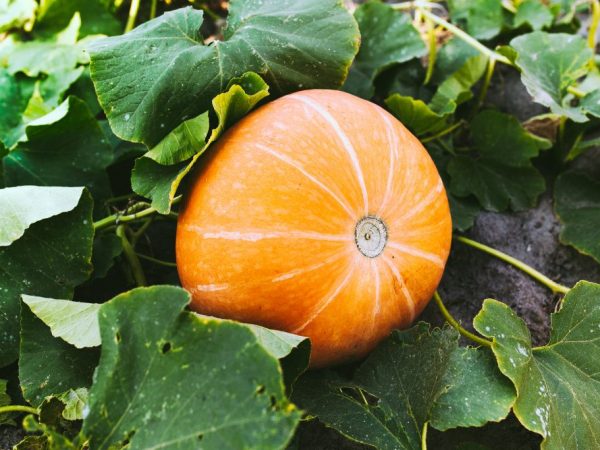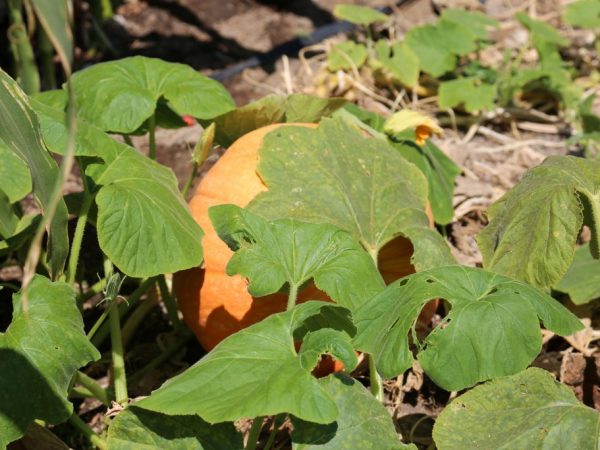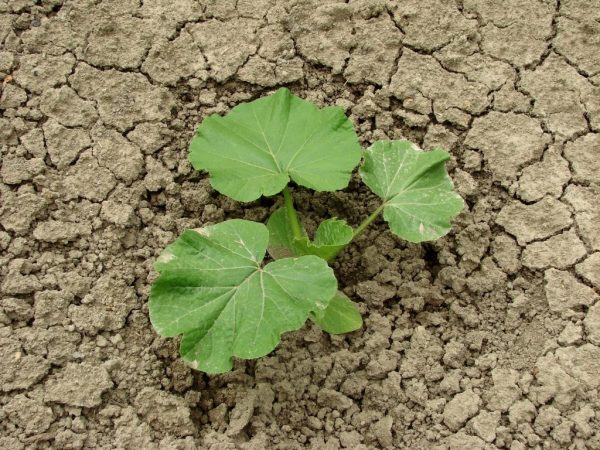Characteristics and rules for growing pumpkin Russian woman
Pumpkin Rossiyanka is a new variety developed by Russian breeders. The fruits are sweet, large, their weight reaches 60 kg. They are stored for a long time without changing the taste. The variety has a rich composition, which includes a huge amount of vitamins, trace elements and nutrients.

Characteristics and rules for growing pumpkin Russian woman
Description of the variety
This species is a large-fruited, early maturing, productive plant, which is characterized by medium climbing, resistance to cold, unpretentious cultivation. This variety has a powerful root system, a wide leaf apparatus and lashes up to 3 m long.
The technical maturity of the fetus occurs 90-100 days after germination. The plant is small in size and can be grown both in a small area and on a trellis in an upright position.
It thrives outdoors, provided it is properly cared for and pre-applied with organic fertilizers.
Fruits are large in size, round in shape, with orange pulp and have excellent taste and marketability. The skin is hard, smooth, contains a lot of zinc, so it is recommended to cut it off while preparing the pumpkin for cooking all kinds of dishes.
Application
Pumpkin variety Rossiyanka can be used both raw and processed. It is boiled, fried, baked, used for making candied fruits, preserves, mashed potatoes, juices.
The pulp contains a large amount of sucrose, so it is sweet, tender and has a pleasant melon aroma. The high content of carotene and potassium in pumpkin pulp has a beneficial effect on the human body:
- promotes skin rejuvenation;
- is a good protective agent against diseases;
- burns extra calories while losing weight.
The seeds are rich in fatty acids, proteins, zinc, magnesium and vitamin D. They are good at helping to overcome acne and other skin rashes. Seeds are recommended for use by people who suffer from diseases of the stomach, liver, heart.
Yield
A distinctive feature of the Russian woman is its high yield. With proper care in compliance with all growing standards, it varies from 18 to 25 kg per bush. Under industrial conditions, up to 30 tons of fruits can be harvested from 1 hectare.
To get a good harvest, you need to follow simple rules:
- before sowing, superphosphate, potassium salt, nitrate are introduced into a previously prepared growing area;
- special attention should be paid to regular weeding, loosening and watering.
Advantages and disadvantages

The variety is resistant to various diseases
The pumpkin of the Rossiyanka variety is rated positively by gardeners. This is a valuable product with a unique taste that deserves attention. Its advantages include:
- the variety is undemanding to the mechanical composition of the soil and its fertility;
- almost all fruits are the same size;
- easy to grow;
- has good fruiting and early ripening, unlike other varieties;
- has resistance to various diseases;
- well transported and stored until the next harvest.
The only drawback of pumpkin is that poor quality seeds are often found. They can be empty or tainted.
Growing
The Russian woman is grown both by the seedling method and by sowing seeds into the ground. Before that, you need to prepare the material. Large, full seeds are selected and prepared for sowing. For this, germination must be applied.
Selected seeds are soaked in water for 3 hours, then spread on any wet material and kept at room temperature until they begin to hatch.
To increase resistance to cold weather conditions, the seed is kept in the refrigerator for 3 to 5 days, and then sowing is started. The planting scheme is 60x60 cm, and deepening into the ground is carried out at a distance of 3-4 cm below the soil surface.
Seedling creation
The seedling growing method is used to obtain an earlier harvest. To sow the material, special pots are used, a pre-prepared soil mixture is placed in them, and then already germinated seeds.
After the emergence of seedlings, there must be proper care for the seedlings - watering, loosening the earth and hardening.
Seedlings are placed in open ground one month after emergence. Before planting, you need to make sure that the soil has warmed up to 18 ° C. Thanks to this, the plants will grow faster.
Garden bed preparation
Before planting the material, they dig up the ground in a few days and apply fertilizers, which include nitrogen. Their number should be approximately 20 g per 1 sq. m of sowing area.
Pumpkin is undemanding to the quality of the soil, but in order to get as many high-quality fruits as possible, it must be grown in moist, well-fertilized, protected from strong winds and illuminated areas.
Landing

A well-lit area is suitable for the plant.
At this stage, the seedlings are carefully removed from the pots and buried up to 5 cm into the holes. The distance between them should be about 60-70 cm. The greater the distance, the better: the fruits are large and heavy and you need a lot of space for their spaciousness.
When sowing in open ground, 2 seeds should be thrown into the holes, as many as possible, but only after the shoots will need to be thinned out in order to prevent excessive density.
Care
Although the Russian pumpkin is a cold-resistant variety, if short-term frosts are foreseen, the plant should be covered with a regular film. At temperatures below 22 ° C, the pumpkin stops growing.
Caring for adult bushes includes watering, applying organic and mineral fertilizers, loosening the soil and weeding. It should be watered once a week with settled warm water in an amount of 4 liters per one bush.
Excess moisture and stagnant water negatively affect plant development. During the fruiting period, it is necessary to reduce watering in order to accumulate more sucrose and increase the strength characteristics of the pumpkin skin.
In adult plants, it is necessary to pinch the main and lateral stems. Organic fertilizers are applied in the form of humus, and ammonium nitrate, potassium salt and phosphorus extract are used as inorganic fertilizers. If the soil is fertile, it will be enough to feed it 3 times per season.
Harvesting and storage
The Russian woman is an early ripening pumpkin variety with a ripening period of 4 months. Harvesting begins in late August or early September. It is important to finish before the first frost. Frozen pumpkin is not stored for a long time.
By the time of harvest, the pumpkin should have a lignified stalk, yellowed leaves and a bright yellow color. Well-ripened fruits are perfectly preserved for a long time.
The vegetable should be kept in a dry, ventilated area. The optimum air temperature should not exceed 14 ° C. It is better to stack a large number of fruits on racks and sprinkle with straw.

